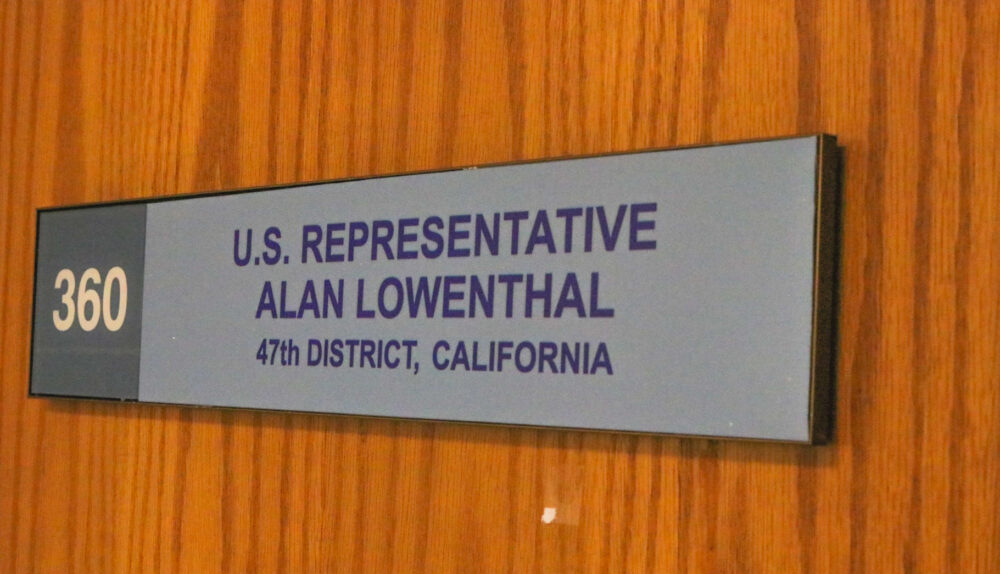
By Tyler Sonderholzer
On Nov. 8, the battle for control of the United States Senate, House of Representatives and governor races across the country are at stake.
Democrats hold slim majorities in both chambers of Congress as Republicans are looking to take back control of both chambers that they lost during former President Trump’s administration. Democrats need both chambers in order to pass President Biden’s agenda as a divided or Republican-controlled Congress would prevent a large portion of Biden’s agenda from passing.
SENATE
Currently, the United States senate makeup is 50-50 and Democrats have the majority due to Vice President Kamala Harris holding the tie-breaking vote. Republicans would need a net gain of +1, meaning holding the seats that they control plus winning a Democratic-held seat, to win back the majority that they lost from the 2021 Georgia runoffs a little over a year ago. While Democrats just need to hold all their seats to keep their majority.
The battleground races, meaning the election could go either way, to watch out for are in four Democratic-held seats and four Republican-held seats. Overall, there are 34 seats up for election, 14 Democratic-held and 20 Republican-held.
Two of the four battleground Democratic-held seats were won in 2020 which is Arizona where incumbent Senator Mark Kelly is running for re-election after he won a special election following Senator John McCain’s passing and in Georgia with Senator Raphael Warnock also won a special election in the Georgia runoffs.
The other two races are in New Hampshire, where Senator Maggie Hassan is running for reelection after narrowly winning in 2016, and in Nevada with Senator Catherine Cortez Masto who was also elected in 2016 succeeding then-Senate Minority Leader Harry Reid who retired that year.
For the Republican-held seats, two of them are open races, meaning that their incumbent senator is not seeking reelection. Those seats are in Pennsylvania, where Senator Pat Toomey, who first won in 2010, said that he would not run for reelection and in North Carolina with Senator Richard Burr, who first won in 2004, stated that he will not seek another term following his election in 2016.
Wisconsin and Florida are the other two races that are Republican-held battlegrounds. Senator Ron Johnson of Wisconsin, who first won in 2010, announced his reelection bid after originally saying he would not seek another term following his reelection in 2016. The Florida seat is held by Senator Marco Rubio, who has held the seat since 2010, whose seat is ranked likely Republican by Sabato meaning he has the highest chance of winning reelection out of all the other Republican candidates.
As for California, Senator AlexSabato’s Crystal ball Padilla, who was appointed by Governor Gavin Newsom following Vice President Kamala Harris resigning from the Senate shortly before her inauguration as Vice President, is running for a full term. The race has been classified as Safe-Democratic by political pundits.
The Republican path to gaining back the majority is winning at least one Democratic-held seat and keeping all the seats under their control. Meanwhile, the Democrats just need to hold all of their seats to keep their majority.

HOUSE OF REPRESENTATIVES
Democrats hold a slim 222-212 seat majority over Republicans with one Republican-held seat currently vacant. Republicans could need a net gain of 6 six seats in order to take back control of the House. However, redistricting is playing a major role in shaping the districts as states could pursue gerrymanders in order to make as many districts for the party in control as possible.
According to Cook Political Report, there are eleven seats that lean Democratic, including one Republican-held seat, and seven seats that are Democratic-held tossups. As for Republicans, there are six that lean Republican, including four Democratic-held seats, and six Republican-held tossups, three that are held by California Republicans.
In California, there are four currently Republican-held seats, held by Michelle Steel, Mike Garcia, Young Kim and David Valadao, that Republicans must hold on their path to winning back the majority in the house. However, Representatives Steel and Garcia have been drawn into more unfavorable districts, meaning their districts have become a couple of points more Democratic. Meanwhile, Representatives Kim and Valadao have been drawn into slightly more favorable districts.
GOVERNOR
Currently, there are 28 Republican-held governor seats and 22 Democratic-held seats. 20 Republican governor seats are up for election while Democrats have 16 up for election.
Democrats have six competitive seats to defend including five that they won in the 2018 midterms. According to Cook, the only seat that is lean-Democrat, the rest are ranked tossups, is in Maine where Governor Janet Mills, who won in 2018, after then-Governor Paul LePage, a Republican, was term-limited and who is Mills likely opponent in the general election.
Pennsylvania is the only open race that Democrats hold after Governor Tom Wolf is term-limited, after being elected in 2014. Three of the last four races are in states that former President Trump won in 2016 but was won by Democrats in the 2018 midterms.
In Kansas, Governor Laura Kelly is running for reelection after winning in 2018 in a traditionally red state and is the only state Trump won in 2020 that Democrats hold. In Wisconsin, Governor Tony Evers is running for reelection after defeating then Governor Scott Walker in 2018. Now to Michigan where Governor Gretchen Whitmer is running for reelection after easily winning in 2018. Lastly, in Nevada Governor Steve Sisolak is running for reelection after winning in 2018 after then-Governor Brian Sandavol, a Republican was term-limited.
For the Republican-held seats, four of the five tossup races that were won by President Joe Biden in 2020, the lone state that Trump won is Florida.
Two of the races are in states Biden easily won in 2020 and have been classified as lean Democrat by Cook. Governor Charlie Baker of Massachusetts, moderate Republican and Trump critic announced he was not running for reelection after first winning in 2014. Meanwhile in Maryland, Governor Larry Hogan, another moderate Republican and Trump critic, is term-limited after being elected in 2014. Both Baker and Hogan are some of the most popular governors in the nation.
In Arizona, state Biden won in 2020, Governor Doug Ducey is term-limited from running after being first elected in 2014. The last tossup race that Biden won in 2020 and is Republican-held is in Georgia where Governor Brian Kemp is running for reelection after winning in 2018. Kemp and Ducey have drawn the ire of Trump for certifying the 2020 election and Kemp is even facing a primary challenge from Trump-endorsed David Perdue, who lost in the Georgia runoffs to Ossoff.
As for Florida, Governor Ron DeSantis is running for reelection after being elected in 2018 and whose race has been classified as lean Republican by Cook. DeSantis is seen as a potential presidential candidate in 2024 if Trump does not run.
In California, Governor Gavin Newsom is running for reelection after easily winning in 2018 and surviving a recall election last September. The race is classified as Safe-Democratic.
Midterms have been historically against the president’s party as Republicans are looking to win back control of Congress that they lost during the Trump presidency. Meanwhile, Democrats are looking to expand their majority in the House and Senate.





